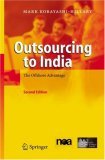singapuranyc.com
IT takes a moment to recognize “Seven Nation Army” on the speakers, a quasi-Celtic fiddle version strung out on harmonics, Muzak gone wild. You are sipping water from a Mason jar under bare dangling bulbs, as if at some rustic hipster bar. But Chinatown-shopkeeper abacuses line the walls, brass lion’s-head door knockers snarl from the backs of chairs, and a kaleidoscope of petaled lampshades has turned half the ceiling into a lotus pond.
It is not clear where in the world, exactly, you are meant to be.
Singapura, which opened in April on the stretch of lower Lexington Avenue known as Curry Hill, is less geographically specific than its name (which is Malay for Singapore) would suggest. Singaporean cuisine is a meld of Malaysian, Chinese and Indian traditions, with occasional flavors drifting in from across the Strait of Malacca.
Singapura dabbles among these, and throws in a little Thai, too. (Ignore it.) The resulting menu is not so much true Singaporean fusion, achieved over centuries of cultures commingling, as a genial camaraderie among dishes of distant relation.
Beef semur ($14) is beef Bourguignon by way of Indonesia, given ballast by tamarind and kecap manis, a syrup of soy and palm sugar. Curry laksa ($6) comes from the Peranakans, descendants of intermarriage between early Chinese traders and Malays. It is a febrile transmutation of chicken-noodle soup, the broth a loud sun-orange with asterisks of red chile, glutted with coconut milk and slipping velvety across the tongue.
Do not stray far from Malaysia. Among the most satisfying dishes are roti canai ($5), a flaky, whorled flatbread tipsy with ghee (clarified butter); kari ayam, a chicken curry redolent of star anise and cloves ($13); and rendang ($15), lamb simmered in spice paste and coconut milk until the liquid soaks in and the meat turns dark and caramelly at the edges.
Nasi lemak, the Malay national dish, is misleadingly filed under “chicken” ($12). What arrives on the plate are tiny silver fish, gazing up balefully from a bed of fried egg, alongside jagged-edged cucumber slices, a heap of achar (pickled vegetables) and an unnaturally perfect dome of white rice. True, there is a chicken curry, but it has been exiled to a separate, smaller bowl. The main attraction, it turns out, is the rice, swollen with coconut milk, fragrant and nutty from knots of pandan tossed in while it steamed.
You need no noodles but the Chinese-inflected char kway teow ($15), fat rice-flour bands of a texture somewhere between sticky and slithery, snaked around torn-up eggs, hot-sweet lap cheong (Chinese sausage), pudgy shrimp and squid. The dish is the gangster cousin to pad see ew from Thailand, packing unexpected heat.
But little among the more strictly Chinese offerings compels, save the Hainanese chicken rice ($15), in which chicken is poached in a garlic-and-ginger-laced stock that is then used to cook the rice. It is an identity switch, the rice almost meaty, the flesh delicate.
Singapura’s owner, Shiva Natarajan, also runs the Indian restaurants Dhaba next door and Chote Nawab across the street. He was born in India in Kolkata (formerly Calcutta), whose Chinatown district is often credited as the fount of Indochinese cooking. At Singapura, this is represented by cauliflower Manchurian, battered and deep-fried florets lacquered with a lurid red, aspiring-to-hot sauce ($7), and paneer strafed by chile peppers, in a nod to Sichuan ($7).
Those who have traveled to Singapore will quibble. The laksa is sprinkled with cilantro instead of rau ram (Vietnamese coriander). Kangkung belachan ($12), water spinach fortified by fermented shrimp paste, has none of the shocking funk encountered in versions elsewhere. Flavors are blunted.
But Singapore is far, and Curry Hill so close. There is pleasure to be had here, in flares of spice that revive and warm.
And at the end come bananas, neatly wrapped in rice-flour paper, then swiftly fried. They crackle before they cave in. Why ask their provenance, when they are already gone?
Singapura
106 Lexington Avenue (27th Street), Murray Hill; (212) 684-6842; singapuranyc .com.
RECOMMENDED Curry laksa; nasi lemak; kari ayam; beef semur; lamb rendang; char kway teow; fried bananas.
PRICES $4 to $18.
HOURS Monday to Saturday, 11:30 a.m. to 10:30 p.m.; Sunday, 11:30 a.m. to 10 p.m.
RESERVATIONS Accepted.
WHEELCHAIR ACCESS Entrance is level with sidewalk. Restroom is not equipped with handrail.



























